With the sounds of last weekend’s V Festival fading away, peace is returning to Hylands House in Widford, on the south-western edge of Chelmsford.
Today Hylands is also a popular wedding venue, and a reminder of just what a stunning location it is for such a celebration can be found in these photographs from nearly 100 years ago.
The wedding they show took place on 3rd August 1920, celebrating the marriage of Phyllis Gooch and Frank Parrish. Phyllis was the eldest daughter of Sir Daniel and Lady Gooch, who owned Hylands at the time. Taking place shortly after the end of the First World War this spectacular wedding, on what looks like a bright and sunny summer day, must have been a breath of fresh air as the country emerged from the privations of total war. Hylands itself had been used as a military hospital during the war, with the Gooch family assisting in its running.
The marriage ceremony took place at St Mary’s Church, Widford, which sits on the edge of the Hylands estate, so the bride would not have had far to travel. Phyllis was aged 20, and in the announcement of her engagement on 4 June 1920 in the Essex Chronicle as having ‘a charming vivacity, and during the war, with her parents, devoted a good deal of time for the benefit of those serving in the Forces.’
Her new husband Frank was aged 23. He was described as being ‘late 60th Rifles’, and his best man, Captain Alan Goodson, was also a military man. In the engagement announcement, Frank was described as:
The bridegroom-elect is a typical example of the young English manhood that sprang to the call to arms. Educated privately, he left school at the early age of 17 and joined the Inns of Court O.T.C. [Officer Training Corps] He quickly gained his commission and entered Sir Herbert Raphael’s battalion of the K.R.R.C. [King’s Royal Rifle Corps – Raphael’s battalion was set up at Gidea Park and was known as the Artists’ Rifles] On receiving his second star in 1916 he went to France, and in a daring raid on some German trenches he was taken prisoner. For nearly three years he was a prisoner of war, and was then among the fortunate ones who were kept in Holland, instead of being interned in Germany.
The photographs below were taken by our favourite local photographer, Fred Spalding. Not only are these photographs fascinating windows to the past, they are an extremely rare example of candid photography. Wedding photographs at this time, where they were taken, usually consist of perhaps one or two images, of the bride and goom leaving the church and a posed family portrait. The cameras of the time were cumbersome and heavy, and used glass plates covered in light-reactive chemicals to capture an image. They would usually have been used with a tripod, and required a long exposure to capture enough light to produce an image.
This is what makes the images below so unusual – candid, unposed photographs of wedding guests mingling, chatting, drinking champagne and eating wedding cake. These kind of shots would have been extremely challenging to take successfully, and Spalding must have pulled out all the stops to produce them. (There are a few exposures which went wrong, but we’ll forgive him for that.)
We think that Spalding may have used a camera such as a Graflex, which had a large. These kind of photographs would still have been challenging to take, but possible. Graflex manufactured the Speed Graphic camera, which was the press camera of choice for journalists in the first half of the 20th century.
Using the Chelmsford Chronicle description of the wedding from 6 August 1920 we can add some extra details to these stylish images:
The church had been beautifully decorated with graceful palms, lovely ferns, remarkably fine white hydrangeas, lilies etc., by Mr W. Heath, head gardener at hylands. There was a crowded congregation, which included friends of the family, the tenants of the estate, and village folk.
A flag-bedecked and carpeted awning stretched from the roadway to the church door. The arrival of the guests was witnessed by a large concourse, and the whole village appeared to have donned their best for the occasion, the bride and her parents being very popular in the village.
The bride, who entered the church holding the arm of her father, looked radiant and very pretty. She was charmingly attired in white charmeuse with Brussels lace train, and carried a choice bouquet of orchids, carnations, and lily of the valley. Her train-bearer was her young sister, Daphne Gooch, who presented a delightful picture, dressed in pink georgette over maize colour, with tulle cap daintily wreathed with small roses.
At the close of the service the organised played Mendelssohn’s “Wedding March,” and as the happy couple left the church the ringers rang a merry peal on the sweet-toned bells of the church.
The bridesmaids were miss Cecile Eykyn and Miss margery Madge, who wore very becoming costume sof blue crepe-de-chine and picturesque gold mesh turbans; they also carried beautiful bouquets of pink carnations.
‘Following the ceremony a reception was held at Hylands by Sir Daniel and Lady Gooch.’ – Phyllis greets her guests
Guests on a lawn at Hylands, attended by a uniformed butler. Note the uniform wearing of coats despite the fact it was 3rd August.
The bride and groom and guests, with elaborate wedding cake and staff serving drinks.
The groom playfully places his top hat on one of the bridesmaid’s heads while the rest of the wedding party look on. The bestman, Captain Alan Goodson, had seved with the Royal Flying Corps during the First World War.
‘Later Mr and Mrs Frank W. Parrish left for the honeymoon amid the hearty good wishes of the assembled guests.’ The couple left in a cream Crossley tourer, which was a wedding gift from the groom’s parents.
The wedding may well have had a bitterweet feel to it. Five years before their daughter’s wedding at St Mary’s Church, the Gooch family had buried their eldest son, Lancelot, there. He had died of influenza in Malta while serving with the Navy. Having lost his heir, Sir Daniel put the Hylands estate up for sale only a month after the wedding.
You can find out more about the techniques of early photography at our Heritage Open Day on Saturday 10 September 2016 – a celebration of creativity in the archives. Find out more here.

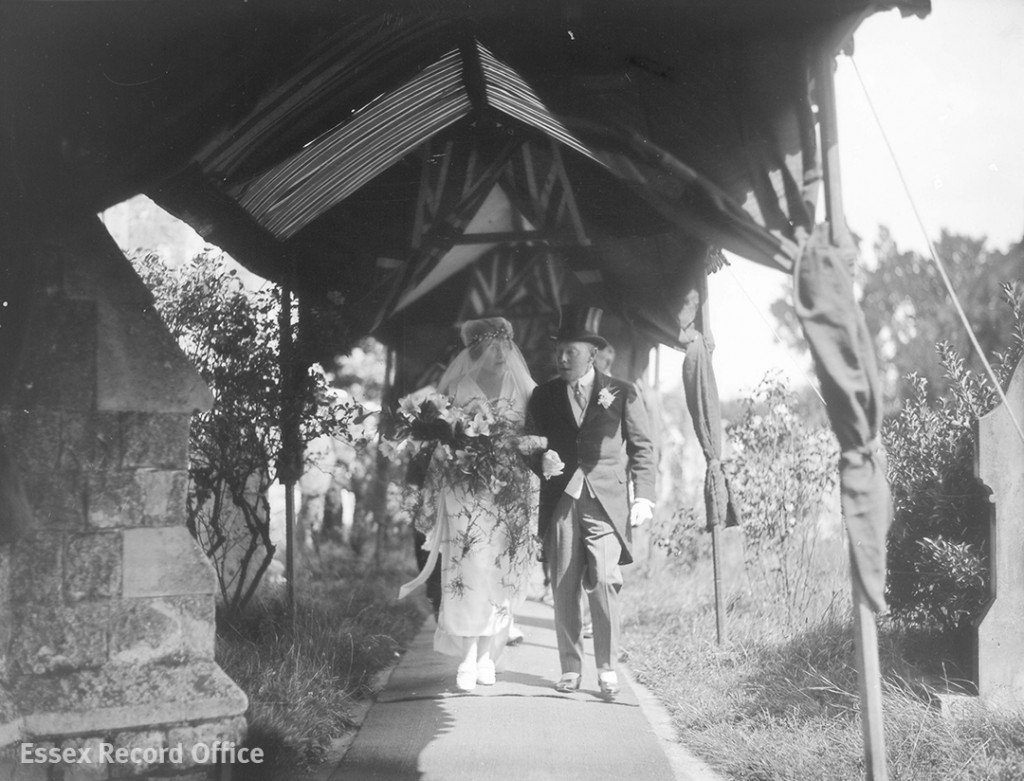
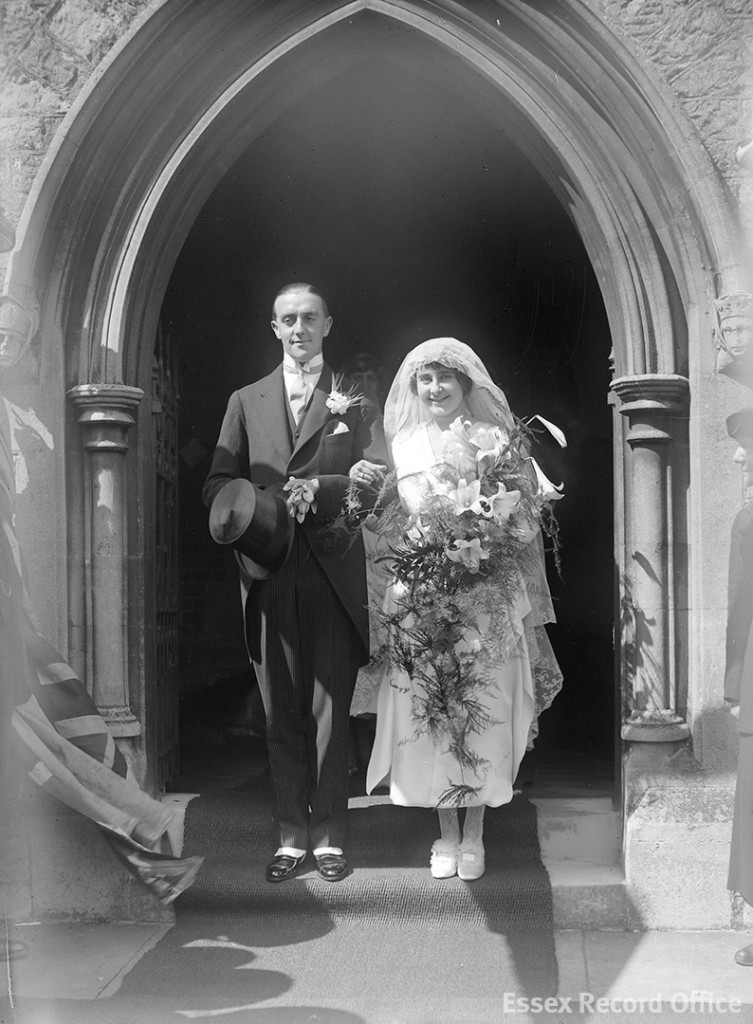
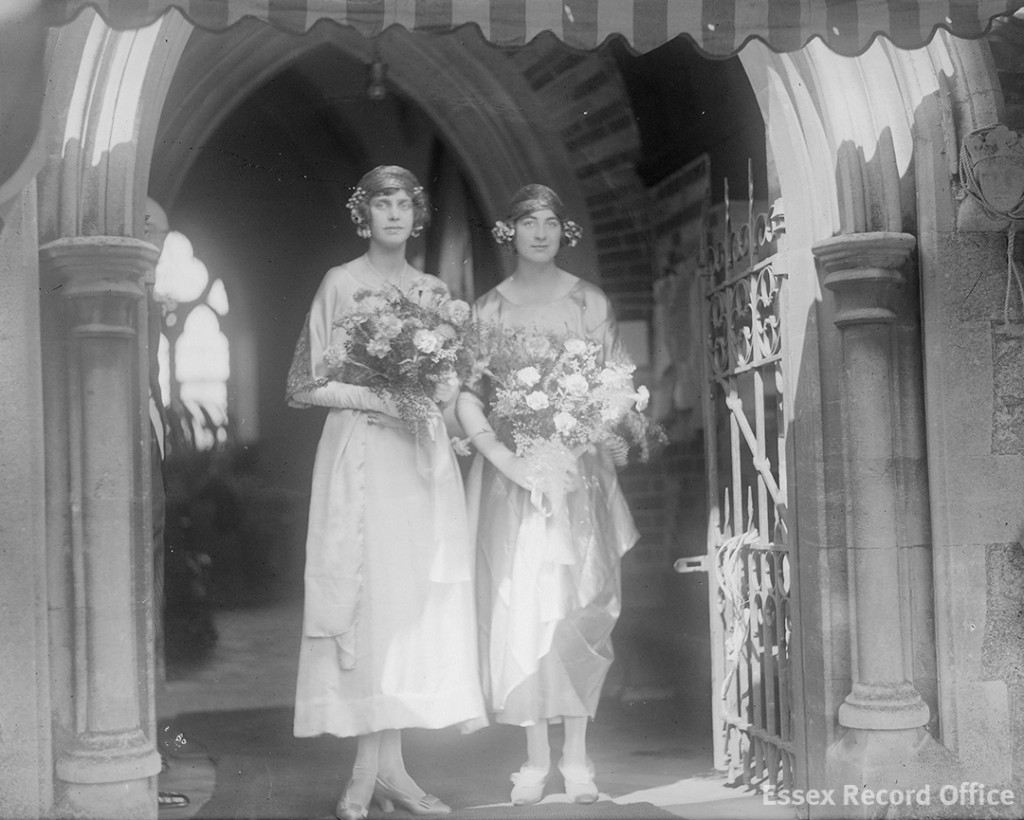
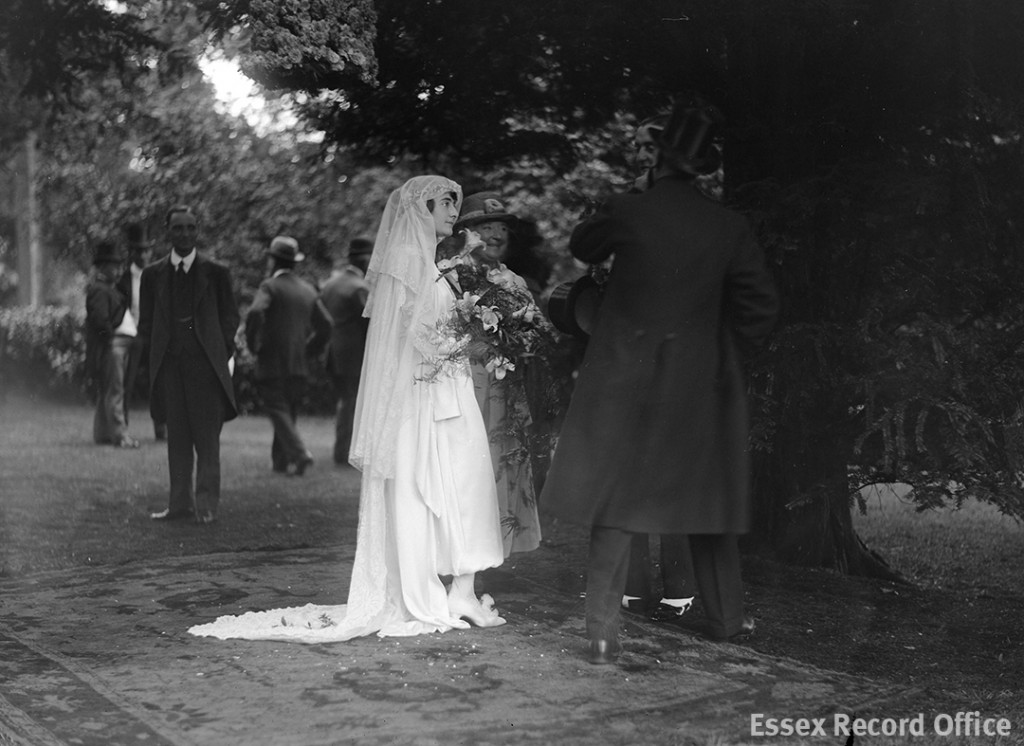
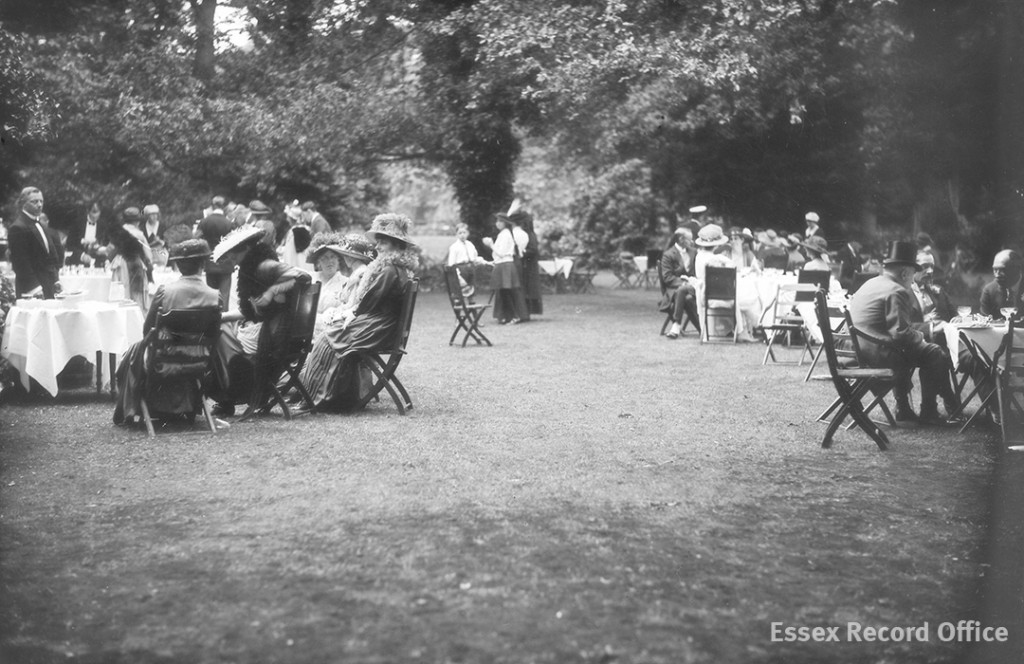
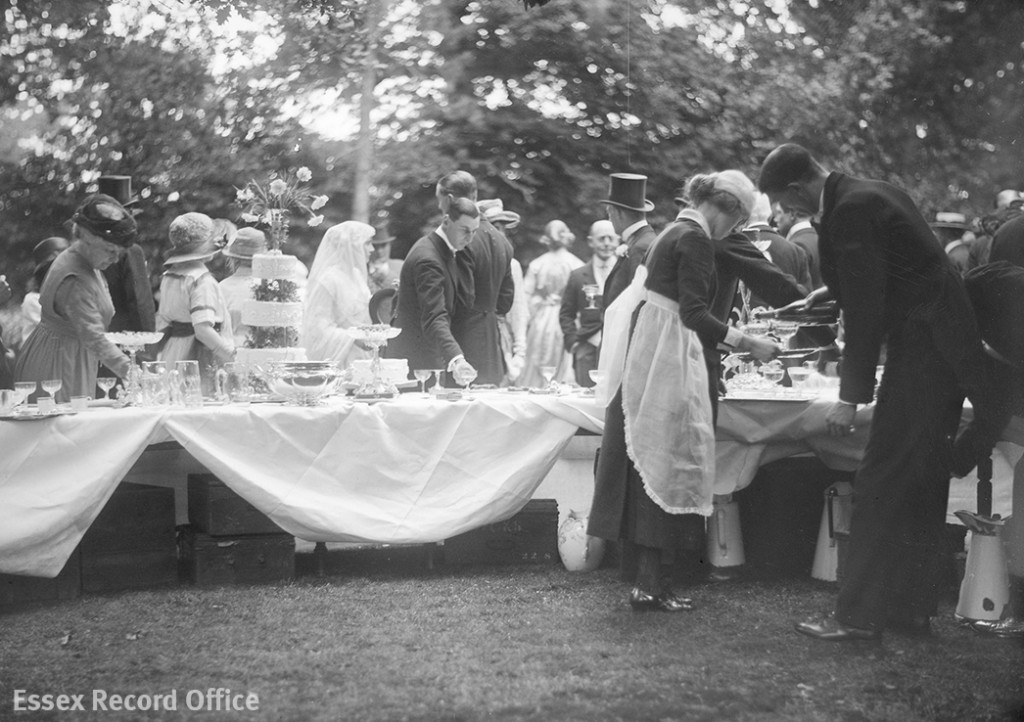
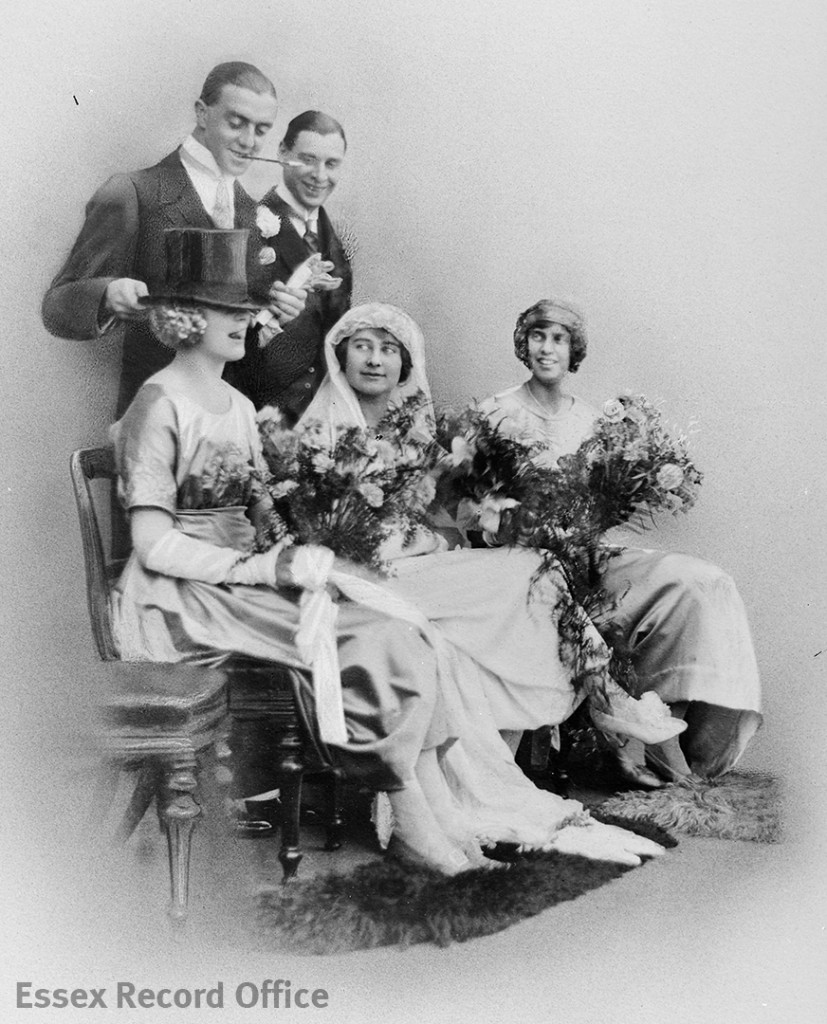
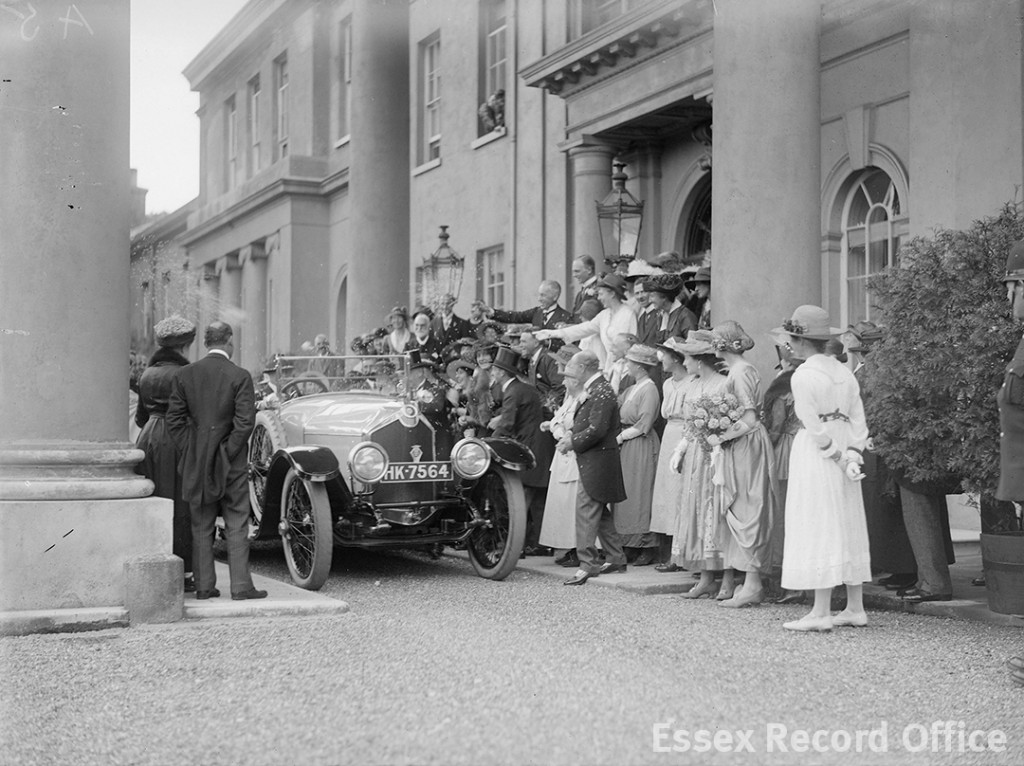
Such an interesting insight into a special occasion of long ago, coupled with account of the surrounding circumstances, thank you.
Very interesting